Learning About Pioneer Life from Evelyn Cameron's Cookbook

Source: Evelyn Cameron Gallery, Prairie County Museum, Terry, MT
Opening the 1890 edition of Mrs. Lincoln’s Boston Cook Book, I’m greeted by Evelyn Cameron’s note, written in red ink, “The earliest sign of hyper-nutrition is the disposition of adipose [or fat] tissue.” I don’t think this was ever an issue for Evelyn. Her self-portraits prove it. I, on the other hand, wondered what other uncomfortable truths I’d read as I turned the pages of Evelyn’s precious cookbook.
Advice by Mrs. Lincoln followed: “People who engage in regular active labor, who take plenty of exercise in open air, cultivate a cheerful, happy disposition, live temperately in every way, and have naturally strong digestive organs, can eat any kind of wholesome food that has been properly cooked, and have no consciousness of a stomach or any visceral organs; and appetite, unless previously impaired, is their best guide. If the digestive organs be not strong naturally, such a mode of life as the above will tend to make them so, more than any amount of drugs or quack medicines.”
There it was. Hard work – the kind Evelyn did each and every day – kept her lean and fit. Her husband, Ewen, was interested in studying wildlife and birds, writing, and reading. The gardening, sewing, farm chores, milking, gathering eggs, mending fences, “gentling” colts, gathering wayward livestock, and the all-important cooking fell on Evelyn’s shoulders. And still, she made time for social gatherings and supported Ewen and herself by photographing life events – from cradle to grave - for over three decades in eastern Montana.
The last 120 years have brought all sorts of conveniences to our day-to-day life. Need to wash clothes? We have a machine for that. Need to fix dinner? We have an Insta-pot – or takeout – or Uber Eats. Evelyn worked from sun-up to sundown. Her diaries attest to chores that were as strenuous and Sisyphean as chopping firewood to the odd afternoon spent straining bugs from homemade wine before bottling it. Day by day the diary gives an accounting of how she spent her life – and the food she ate.
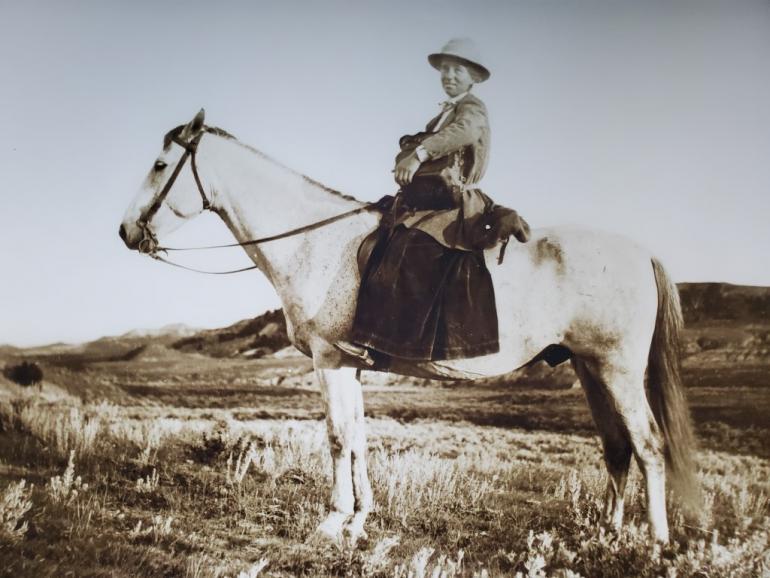
Source: Evelyn Cameron Gallery, Prairie County Museum, Terry, MT
Her life didn’t start out this way. It began in the outskirts of London, born in 1868 into a family of means. She always preferred the outdoors, horseback riding, and hiking, to those activities expected of a young woman of genteel birth. Undoubtedly, her life didn’t involve chores in or out of the kitchen when she grew up. Her family employed 15 servants.
Evelyn Jephson Flower met and fell in love with Ewen Cameron, a not-quite-divorced Scotsman 13 years her senior. They ventured across the Atlantic to hunt big game near Miles City on their “honeymoon”. A sizeable inheritance from Evelyn’s deceased father funded the trip.
In love with the West, they returned to England, collected their belongings, and moved to eastern Montana for good in 1891.
Their life became one of hardship, perseverance, and resourcefulness. After being introduced to photography, Evelyn documented their lives with photos and chronicled them in the pages of her journal. Her less publicized but enlightening Mrs. Lincoln’s Boston Cook Book offers insights into the austerity and abundance of rural Montana, as well.
Cameron was a lifelong student of Mrs. Lincoln. The cookbook wasn’t one that sat on a shelf—quite the opposite. Pages are stained, battered, and overflowing with recipes for Betsy’s Muffins and Mrs. Bryant’s Crullers. This well-used cookbook with newspaper clippings, drawings, and many handwritten notes was Evelyn’s key to learning all things domestic when she and Ewen Cameron set up house near Terry and later Fallon.
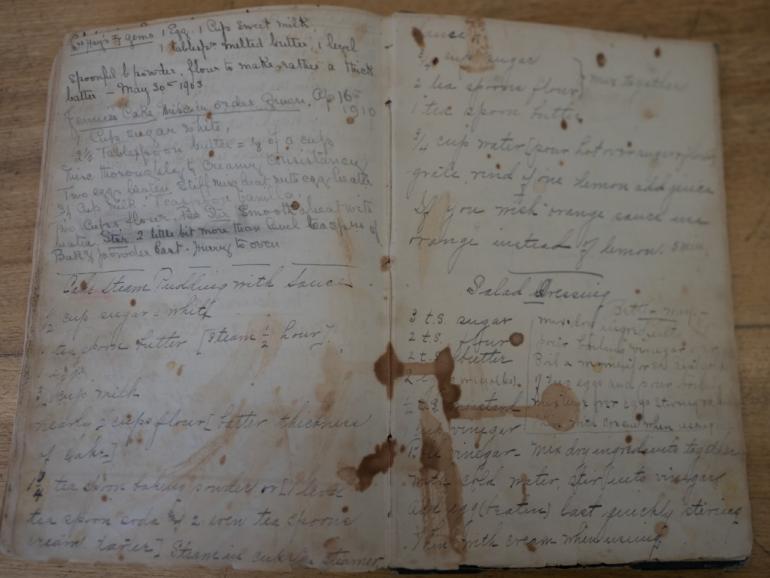
Source Montana Historical Society Library, Helena MT.
Mrs. Lincoln’s Boston Cook Book was a comprehensive guide to running a home. Its scope went well beyond recipes. And Evelyn carefully highlighted important passages with a precise red line throughout, all the way to the final chapters on how to properly wash dishes.
She writes in her journal, “Tuesday, March 2, 1897 . . . Wrote out a few (of my own experience) practical hints in Mrs. Lincoln’s book . . .” She underlines a portion about how to wash the breadboard, something she must have done countless times. She made about seven loaves of bread a week and has a picture of her kneading bread to prove it.
Along with highlighted passages, Evelyn filled the cookbook’s once blank pages with practical notes and recipes from friends and neighbors. The lion’s share of recipes was from her mother-in-law, presumably Ewen’s favorites - everything from ginger beer to cured ham:
To each ham put 1 lb. of bay salt, ½ lb. of common salt, 2 ½ oz. of salt petre & 1 oz. of black pepper, put them all together, then rub it over the ham. Let is lay 4 or 5 days turning it every day, then rub 1 lb. of treacle over it letting it remain 1 month in this pickle. – Put it into soft water 24 hours before it is dried – It will likewise require to be soaked before it is dressed for the table. Beat the ham with a rolling pin before it is salted. – (Mrs. Cameron’s)
In her naturalized home, Evelyn connected with fellow pioneers as fences went up and changed the way of life from open plains to farms and ranches. Home gardens were of utmost importance and a 1924 newspaper clipping pasted in the cookbook highlighted Evelyn’s thoughtful approach to sustaining the household. “Nutritional experts at the University of California have estimated the amount of vegetables required by a single person during a year . . .35 pounds of greens, 60 pounds of carrots, 20 pounds of cabbage . . .” and the list went on.

Source: Evelyn Cameron Gallery, Prairie County Museum, Terry, MT
The article continued with the number of feet the home gardener should devote to each crop and gave Evelyn the guidance she needed when planting her own garden and ensuring a surplus of produce to sell. She carefully recorded these sales in her journal – “sweetcorn 1 dozen 10c, cucumbers 20c dozen, cabbages 2c per #.” Evelyn saw to it that food to suit Ewen was on the table. She sold any excess eggs, milk, and vegetables to neighbors and friends.
She spoke of lean times in her diaries and substitutions in her cookbook, “Meat and fish croquettes can be made without eggs, should eggs be scarce, by mixing well boiled rice with the main ingredient. Custard can be made with fewer eggs by the addition of about 1 tablespoon of cornstarch to the quart of milk.”
But just as substitutions were necessary at times, Evelyn and Ewen shared their abundance. Most of Evelyn’s diary entries made note of their meals, the recipes that worked and those that didn’t. They dined with friends, celebrated birthdays, and loved a good Fourth of July picnic. Dessert at home or for a party was always part of the menu.
Journal Entry from March 13, 1905.
Stitched buttons & holes in E’s (Ewen’s) buckskin breeches. 14 eggs.
Made a manquee sponge cake.
7:00am - 16*, 10am cloudy 22*, 6pm – cloudy 26*, cloudy all day, East wind.
Arose 6:40. Breakfast on. Fed chicks. Cleaned barn & box. Milked. Watered Splash & 3 other barn creatures. Breakfast 8:40. Washed up. Swept, etc. Put beef to roast, bones to stew, prunes to boil. Stitched at E’s buckskin breeches. Made an Inglis’ receipt sponge cake, 5 eggs (5 eggs weighed 9 oz.) weigh 4 in flour, weigh 3 in sugar. Oven so hot, in spite of paper round cake, it burnt black as jet, tho’ rose pretty well, fell when out of oven. Dinner 1:50. Mince, baked tatoes, prunes, cream, Madeira cake. Washed up. Drew ‘osses feeding on the south hills in Lincoln’s Cookery Book. Stitched. 4:20 out. Put partition in nest boxes. Got up water. Milked. 4 in barn. Chopped wood. WD (wrote in diary). Supper 7:10. After supper, sewed buttons on E’s breeches till 9:00.
Did Evelyn mean to write manqué – a French word for one who has fallen short of expectations? The cake fell, that much we know, maybe because she transposed the proportions from the recipe, using the weight of four eggs in flour and three in sugar:
Mrs. Ingals’ Sponge Cake* (handwritten recipe in Mrs. Lincoln’s cookbook)
5 eggs, weight of 3 in flour – weight of 4 in sugar. Beat all for 20 minutes together sifting the flour in gradually. Bake ¾ to 1 hr. Oven very hot at first allowing it to cool off.
*March 13, ’05 followed Ingals’ cake directions implicitly. Result – A good manquee. Next attempt try an extra egg. 5 Ranch VE eggs weighed 9 ounces.
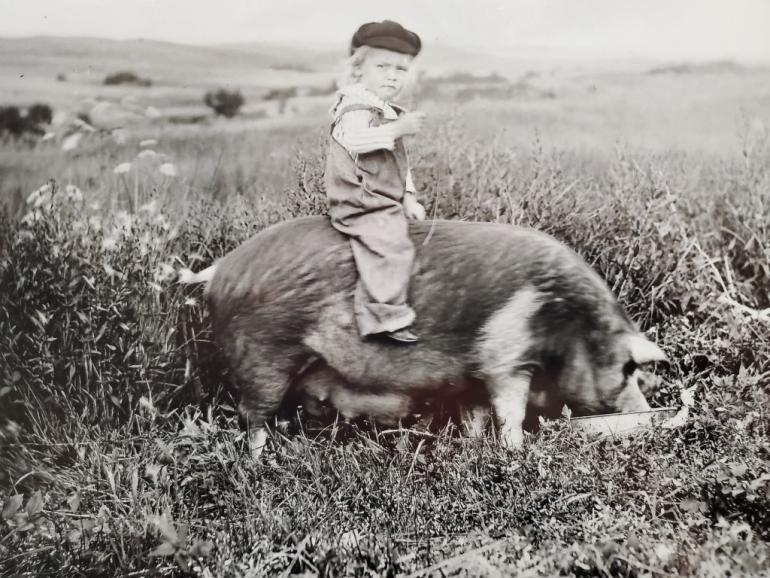
Source: Evelyn Cameron Gallery, Prairie County Museum, Terry, MT
Evelyn made lots of ice cream – a sign of the abundance of snow and freezing temperatures, cream and eggs. “Wednesday, February 8, 1911. I cut up a tub full of ice – made ice cream mixture – 2 qt. cream, ½ 0can condensed milk, 2 eggs, about 2 cups milk – froze in 20 minutes . . .” She brought the ice cream to Mr. William’s birthday party along with cranberry sauce and a jar of citron preserves for toppings.
Three days later, her journal entry reads, “Made Mrs. Lincoln’s custard ice cream No. 2, with Nelson’s Gelatine (sic) in it. Turned out fine. ½ hour to freeze. Delighted with ice cream. We all had some but Ewen.” The maximum temperature was -12 degrees that day.
After all this talk about cake, cookies, and ice cream including some made with milk, snow, and husk tomato preserves, Mrs. Boston rains on the parade: “The corpulent should abstain from fat as well as sugar and starch. A diet of whole-wheat, milk, vegetables, fruits, and lean meat will produce only a normal amount of fatness; while an excess of sweets, acids, spices, and shortening keeps the system in an unhealthful condition.”
Undeterred, Evelyn ate dessert every day. After Ewen died, she stayed on the farm until she passed away 14 years later. She filled her days cooking, cleaning, tending the farm, and setting the occasional fence post using the mortar recipe she wrote in her cookbook, “Mix 5 pails of sand to one of slacked (slaked) lime.”
To learn more about Evelyn's diaries, check out the Montana Historical Society Library, whom I'd like to thank especially for their help in this piece!

Teresa Otto is a freelance writer, photographer, and retired pediatric anesthesiologist. She recently moved to The Woodlands, Texas from Montana. When she’s not traveling the world, she serves as a waitress and housekeeper for two rescued cats and a dog. Follow her travels on www.teresa-otto.com.
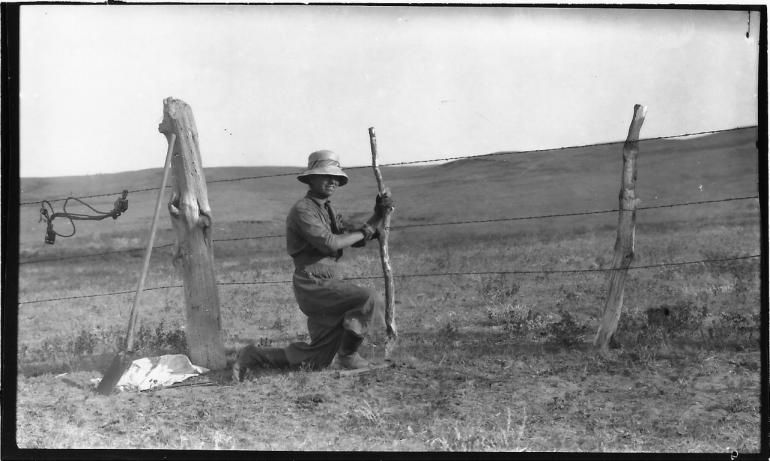
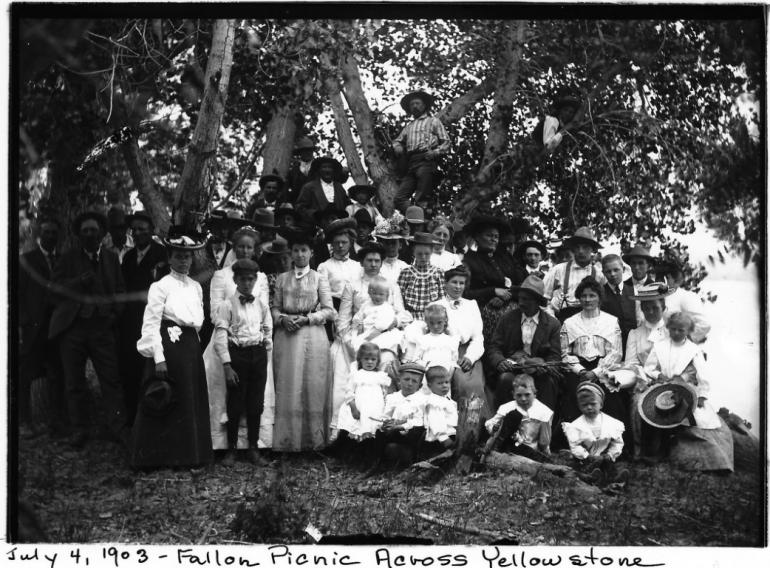
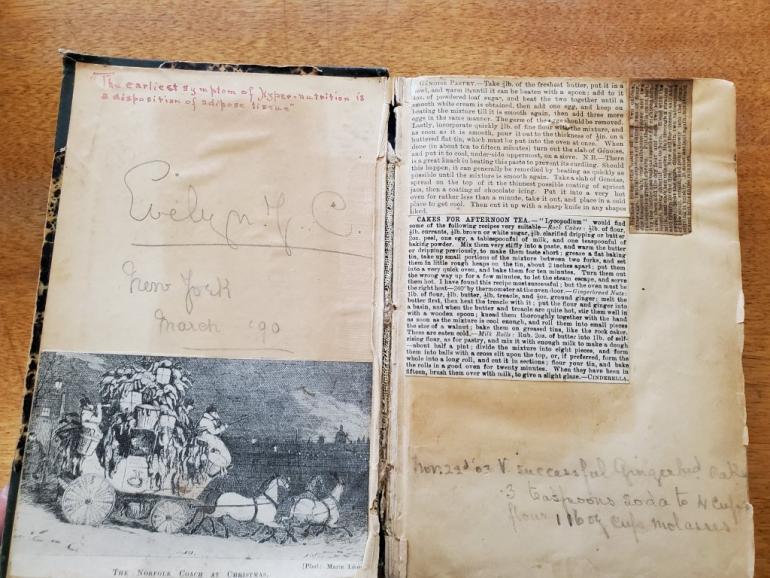
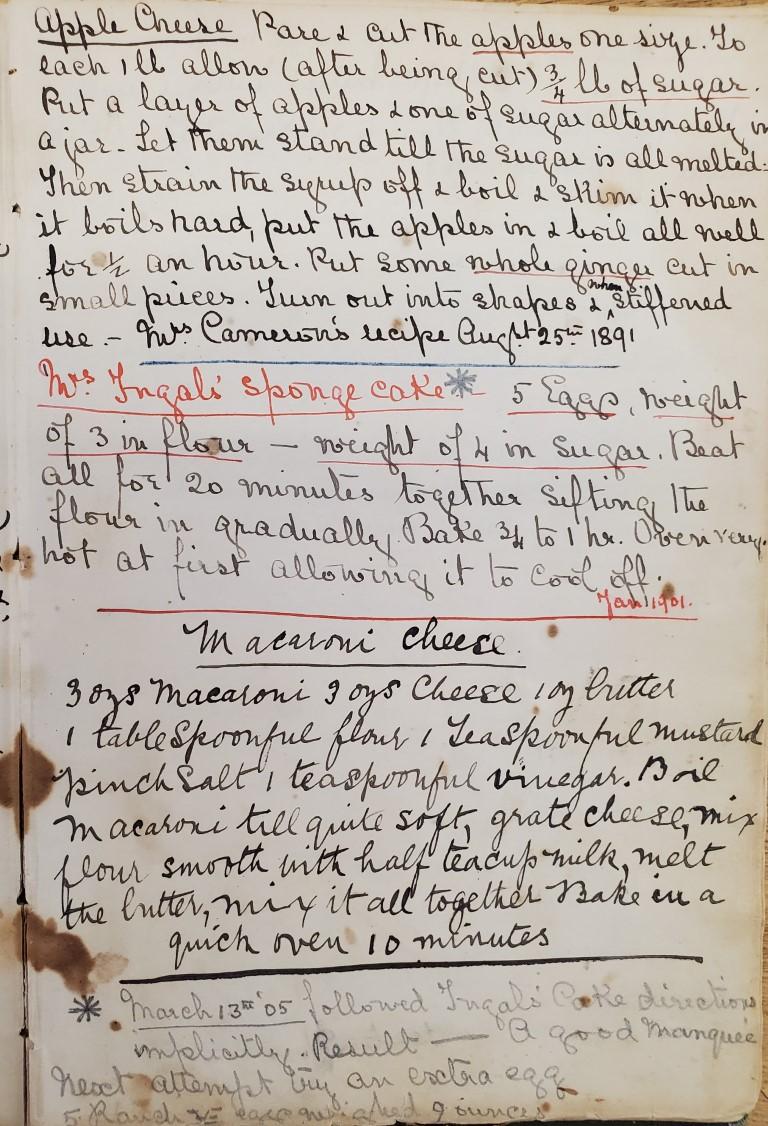
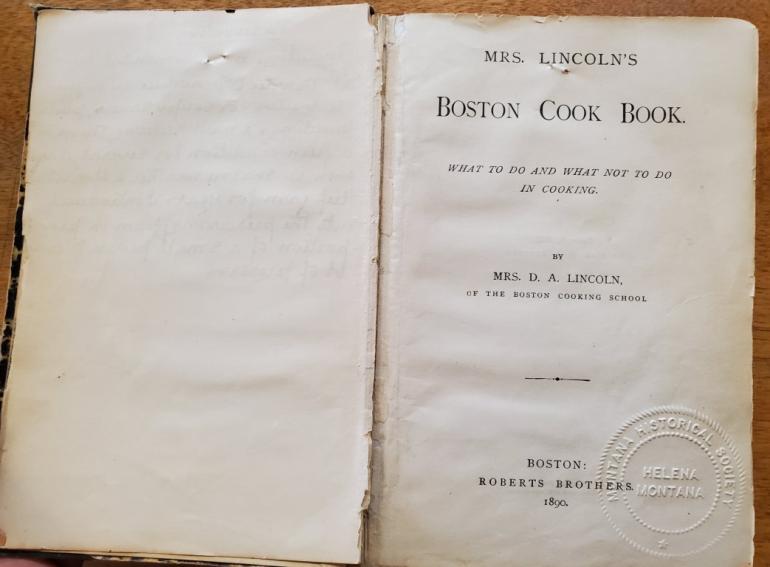
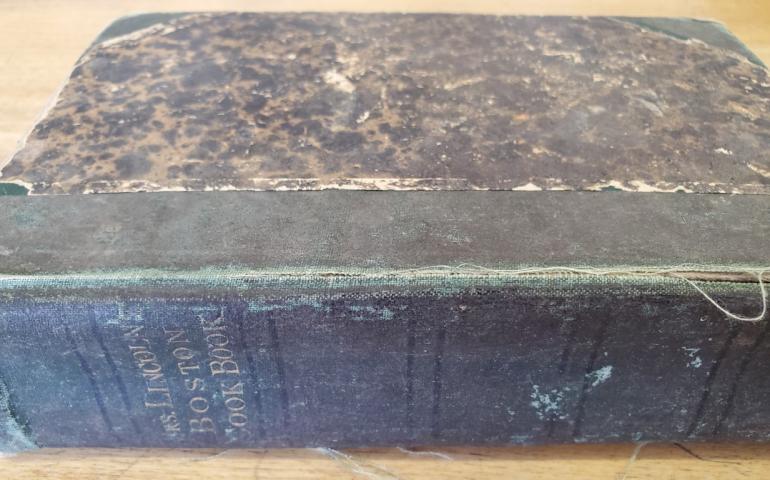
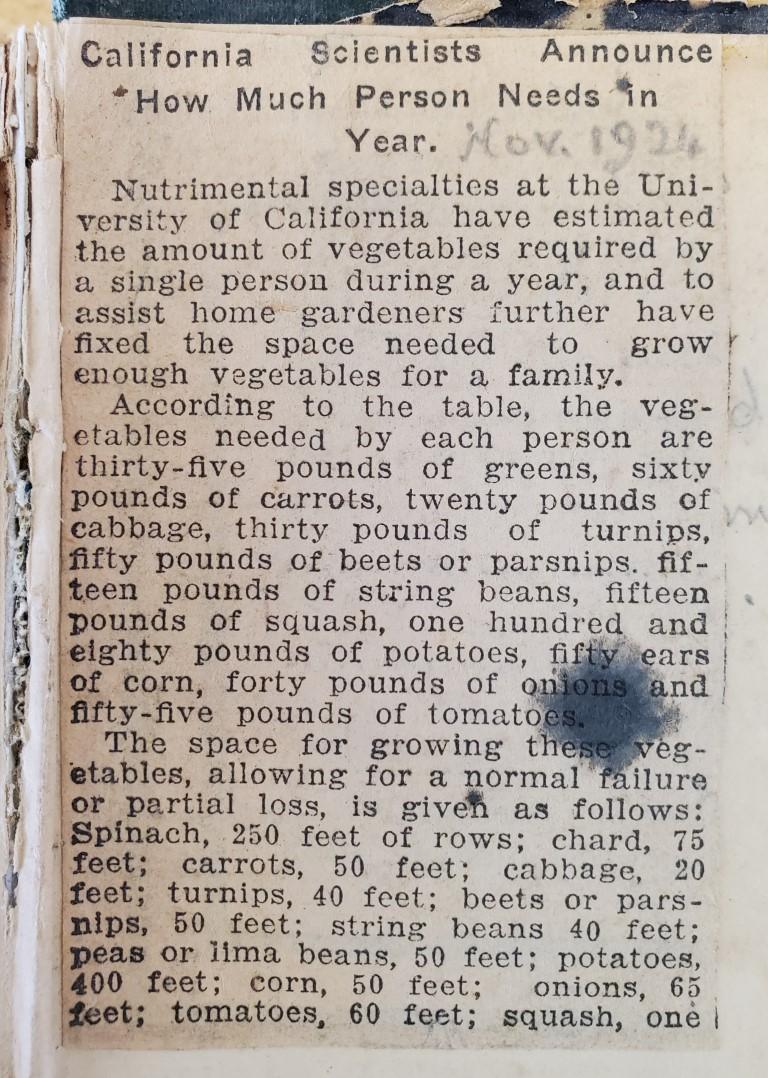






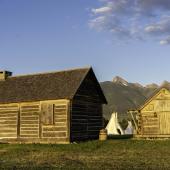

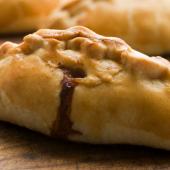
Leave a Comment Here